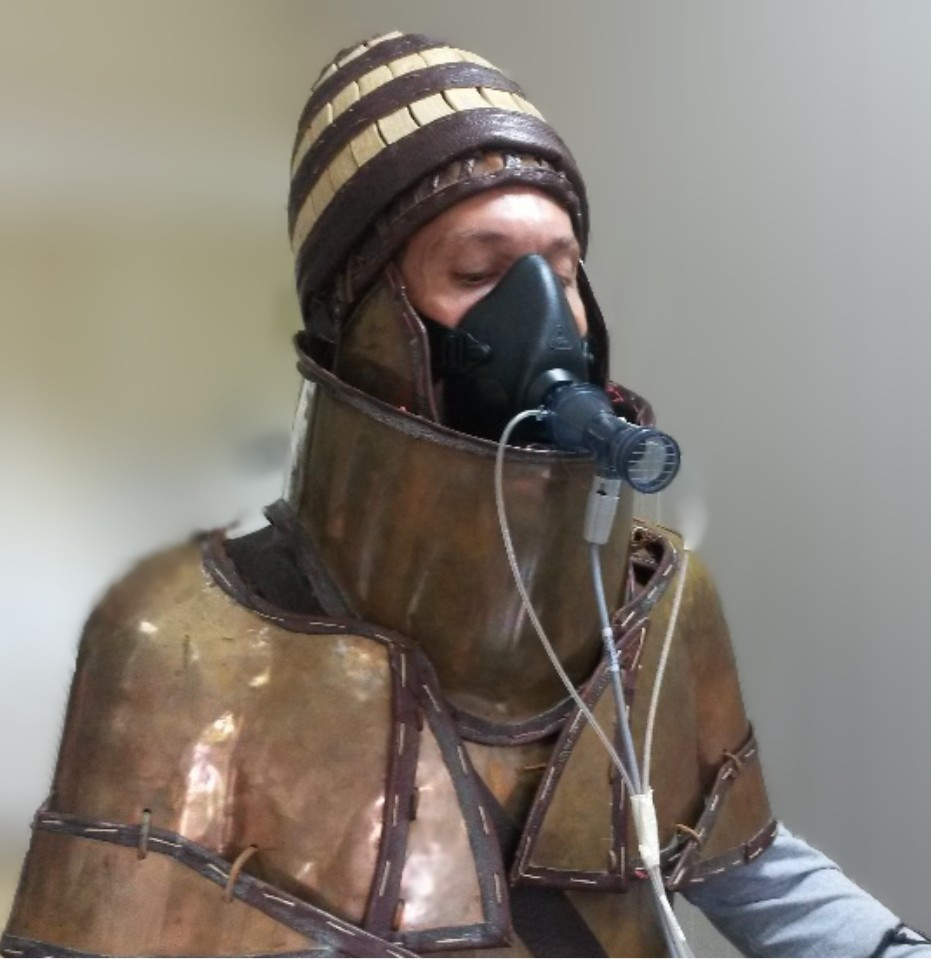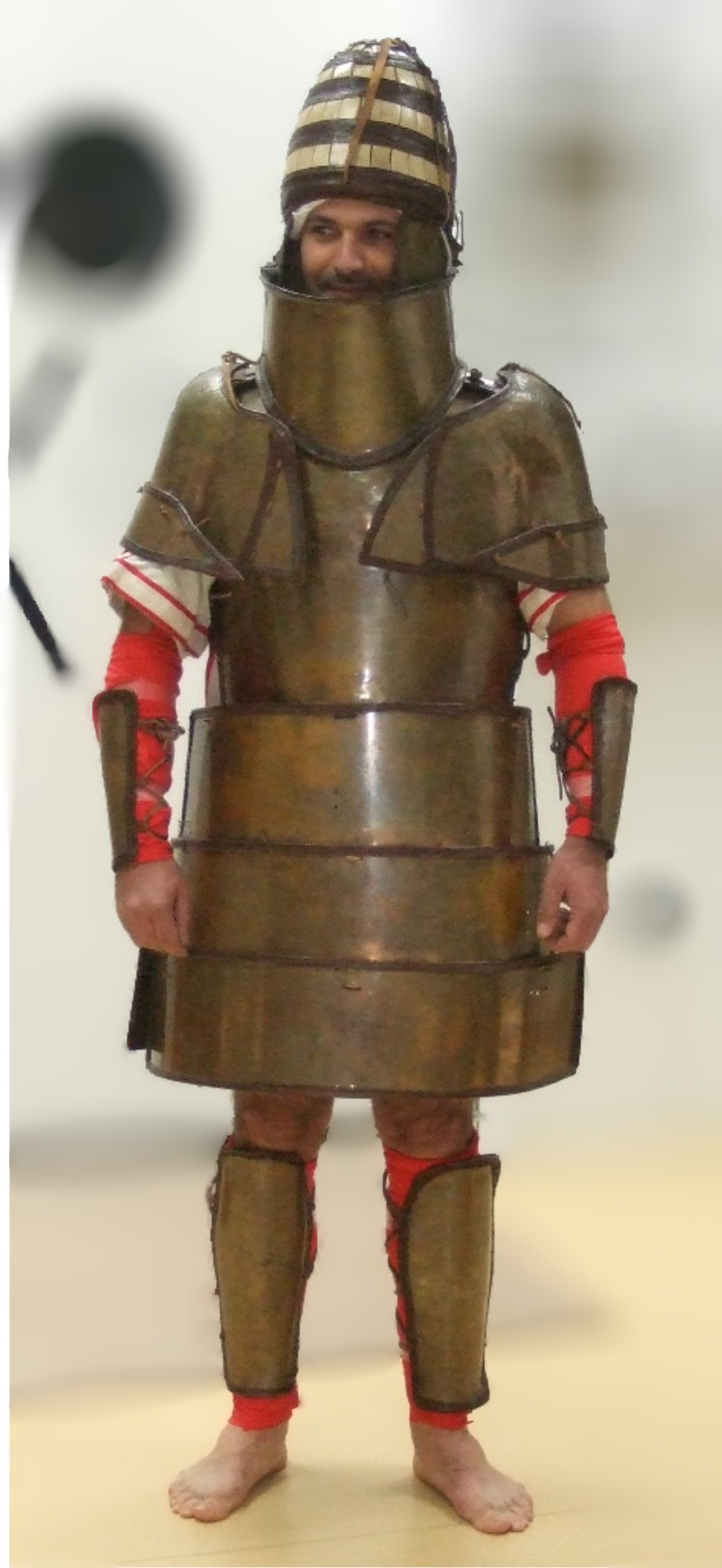Filenews 23 May 2024
A replica of a 3,500-year-old full-length bronze armour was studied at the University of Thessaly, worn by trained Greek marines following a demanding combat simulation protocol.
The study was recently published in a prestigious international scientific journal.
The results showed that the armour in question could well be used on the battlefield, and was not just a ceremonial dress, as originally formulated.
Where did they discover it?
"The best-preserved and almost complete example of Mycenaean-era full-body armour consisting of wrought copper plates dating back to the 15th century BC was found in the village of Dendra in Argolida by Swedish and Greek archaeologists in May 1960. However, from the day of its discovery, the question that concerned experts was: was it used only for ritual purposes or was it also intended as an effective instrument of war? The lack of a documented answer so far has limited the full understanding of the conditions prevailing in the military conflicts of the time, which determined the social transformations of the prehistoric world," Dr Ken Wardle, professor of archaeology at the University of Birmingham in England and member of the research team, told the Athens-Macedonian News Agency.

The armour was used by the ancient Greeks in the 15th century BC.
Professor Emeritus and inspirer of this study, Dr. Yiannis Koutentakis, also stressed to ANA-MPA that "in order to answer the above question, it took the innovative collaboration of two seemingly unrelated sciences, archaeology and sports physiology, in order to accurately evaluate the loads caused by armour on the bodies and biological functions of volunteers. The results overturn the previous perception that the armour in question was just a ceremonial costume, mainly due to the supposedly cumbersome construction, thus illuminating an important aspect of the Bronze Age in Greece and the Eastern Mediterranean in general. In addition, the findings show the potential of collaborations of different sciences. I hope that the new specialty that has been created, that of "archaeophysiology", will be the vehicle for new studies in the future".
How they used it
Professor Dr Andreas Flouris, who led the whole effort, explains: "The replica armour used in our study had the same dimensions and weight as the original. Our volunteers strictly followed a "Homeric diet" of about 4,500 calories, which was based on relevant descriptions of the Iliad. During an 11-hour battle protocol, which was also designed following relevant descriptions of the Iliad, we measured the energy expenditure as well as the burdens that the volunteers' bodies received at temperatures of 30-36 degrees Celsius, which were typical for the summer season in Greece at the end of the Bronze Age. We measured heart rate, energy consumption, body core temperature, fluid loss, muscle function, and blood markers."

The entire armour
Stavros Petmezas and Panagiotis Asimoglou, members of the scientific team, point out to ANA-MPA that "in no case was there a malfunction of the armour regarding the movements of the volunteers, or excessive burdens on their bodies. Thus, more than 60 years after its discovery in the village of Dendra in Argolida, we could say with certainty that this particular armour not only allowed all the necessary movements of the Mycenaean fighter, but also protected him from enemy blows."
It existed before the Trojan War
"The technology developed by the Mycenaeans in the construction of a battle-effective armour explains, at least in part, their strong presence in the eastern Mediterranean. Only a strong military force such as that of the Mycenaeans could, for example, oppose the Hittites (who in the second half of the 2nd millennium BC dominated from Asia Minor to Mesopotamia) and gain their respect, as shown by the records of the latter," said Professor of Archaeology Dr Ken Wardle.
Finally, it should be noted that the results of our study weaken the theory that references to bronze armour in the Iliad are later additions, and reinforce the view that the relevant technology already existed long before the Trojan War", concludes the Professor of Archaeology.
*The authors would like to thank General and Honorary Chief of General Staff Mr. Alkiviadis Stefanis, Lieutenant General and Honorary Director of III Army Corps Mr. Dimitrios Bikos, Lieutenant General and Honorary Commander of 98 ADTE Mr. Dimitrios Tsipidis, as well as all volunteers of the 505th Marine Battalion, for their unwavering support in completing the study. The study is dedicated to research team member Diana Wardle who did not get to see it in its published form.
RES
